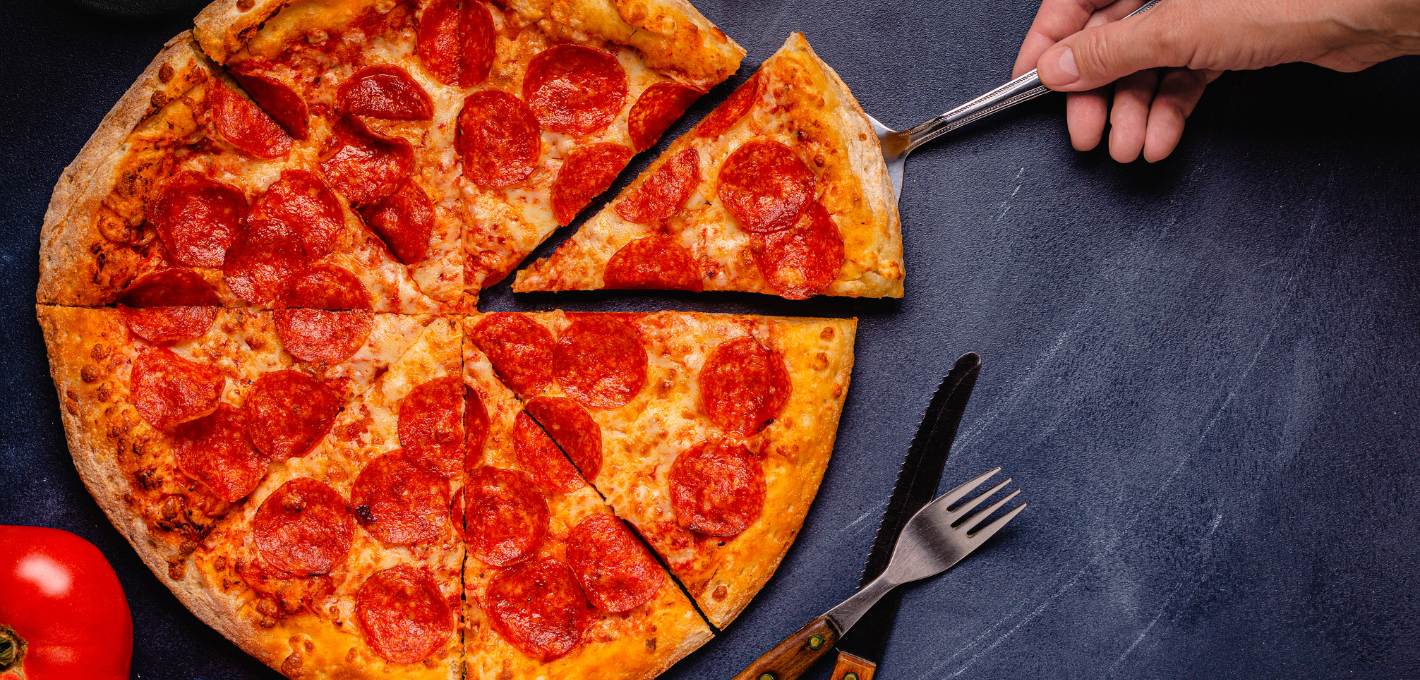
- The Lazy Caterer’s Sequence explains how to make the most pizza slices with the least number of straight cuts.
- With just six carefully placed straight-line cuts, you can divide a pizza into 22 slices.
- It’s not about fairness or equal size—just maximizing pieces for minimal effort (and maximum fun).
The Lazy Caterer's Guide to Cutting Pizza Like a Genius
Let’s face it: cutting pizza can be a struggle. You want to be fair, but also efficient—and preferably not turn dinner into a geometry lesson. But what if I told you there is a way to slice a pizza that's both incredibly clever and ridiculously lazy?
Yes, you read that right. Lazy. As in minimal effort, maximum results.
It’s called the Lazy Caterer’s Sequence, and while it sounds like a sitcom character, it’s actually a real mathematical concept that tells you how to cut a circular pizza (or cake, or anything really) using the fewest number of straight lines to get the most slices possible.
Let’s dig in. (Pun fully intended.)

🔪 Cutting Pizza the "Normal" Way
Most of us go for symmetry. One cut down the middle. Then a cross. Maybe two diagonals if you’re feeling fancy. You end up with 6 or 8 equal slices and call it a day.
That’s fine if you want everyone to be happy.
But what if you just want more slices, regardless of size or shape? What if you're feeding a hungry crowd or just trying to stretch one pizza to cover 5 different topping preferences?
This is where the Lazy Caterer swoops in.
🍰 Meet the Lazy Caterer's Sequence
This sequence tells us the maximum number of pieces we can get from a circle (like a pizza) using only straight-line cuts—no curves, no folds, no sorcery.
Here’s how it plays out:
- 0 cuts = 1 piece (obviously)
- 1 cut = 2 pieces
- 2 cuts = 4 pieces
- 3 cuts = 7 pieces
- 4 cuts = 11 pieces
- 5 cuts = 16 pieces
- 6 cuts = 22 pieces
You can see it’s not just adding the same amount each time. Each new line adds more pieces by intersecting the existing ones—if you place it smartly.
The real trick? Make sure every new cut intersects as many previous cuts as possible, but only once per line. Each intersection splits an existing region into two.
🧠 So… What's the Formula?
Glad you asked.
If n is the number of straight cuts, then the maximum number of regions (slices) you can get is:
F(n) = 1 + n(n + 1)/2
It’s basically the sum of the first n natural numbers, plus one for the original whole pizza.
So for six cuts:
- F(6) = 1 + 6×7/2 = 1 + 21 = 22 slices
Boom. Math just helped you feed the room.
🍕 Real-World Cutting: It Gets Messy
Okay, theory is nice. But what happens when you actually try this on a real pizza?
You’ll need:
- A round pizza or tortilla (even a cake works)
- A long knife or pizza cutter
- A steady hand
- A bit of patience
Start with your first cut—any direction. No stress.
Then make the second one cross the first, but not at the center. Already you’ll get 4 slices.
Now, for every next cut, try to cross every previous line at a new point. That’s the hard part. It's like trying to dodge traffic while drawing perfect lines of cheese and crust.
Your sixth cut, if placed perfectly, should cross all five existing cuts and create six new regions—pushing your total to 22.
But be warned: in real life, it's messy. Cheese gets in the way. Crusts split. And suddenly you’re holding a math problem covered in marinara.
🧀 It's Not About Fairness
One thing to note: this isn’t about getting fair slices. Some pieces will be huge. Some will be microscopic. That sad corner sliver? Perfect for the person who said they “already ate.”
But if your goal is more pieces—maybe for variety, maybe to serve more people, maybe just for the fun of it—then this is your best (and laziest) bet.
And hey, you also get to casually flex some math knowledge while you're at it.
📐 Why This Works (a Bit of Math-y Magic)
Each new line can, at most, intersect every existing line once. That means:
- Cut 1: 1 piece → +1
- Cut 2: Crosses 1 line → +2
- Cut 3: Crosses 2 lines → +3
- Cut 4: Crosses 3 lines → +4
- ...and so on.
So each new cut adds as many new pieces as the number of lines it crosses. That’s why the total number of slices follows the formula we mentioned above.
It’s a neat little pattern that comes straight from combinatorics, a field of math that studies combinations, arrangements, and clever counting tricks.
🍽️ Should You Try This at Home?
Absolutely.
Whether you’re showing off at a party, doing a fun math activity with kids, or just want to feel like a pizza-cutting genius, it’s worth giving a shot.
You probably won’t nail the perfect 22-slice masterpiece on your first go (spoiler: even math YouTubers mess it up), but you’ll definitely impress people—and maybe even yourself.
And hey, even if your lines are crooked and your slices uneven, it still tastes like pizza. Which means it’s a win.
Stay cheesy, stay curious, and keep slicing smarter with 3-Min Reads!
#lazycaterer #pizzamath #mathinhacking #slicingtips #foodandfun

.png)




